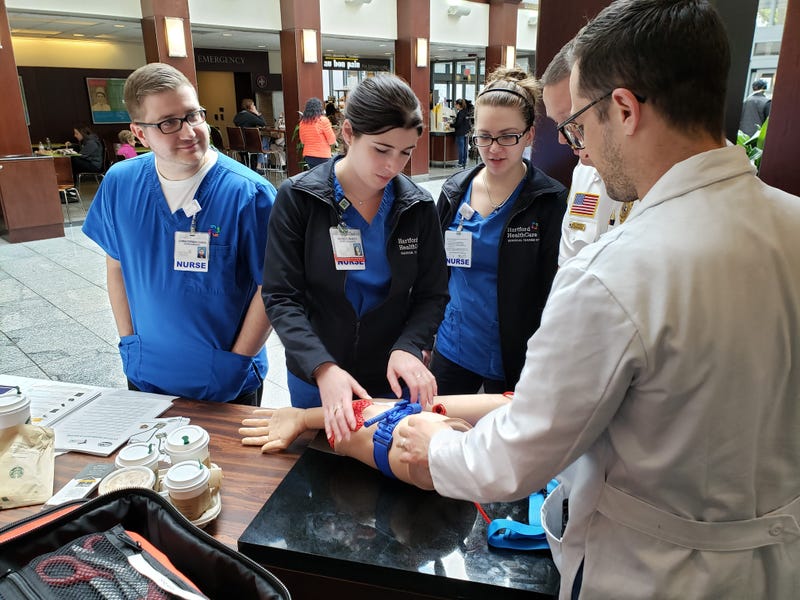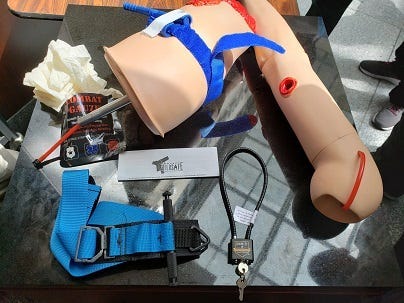
HARTFORD, Conn. (WTIC) – The month of May is national Trauma Awareness Month and Hartford Hospital is spreading the word with Trauma Day.
Wednesday’s event partnered clinicians from the hospital’s trauma program with the Injury Prevention Center to promote safety through informational handouts and demonstrations.
Most of the information focused on this year’s theme – firearm injury prevention. Trauma surgeon at Hartford Hospital, Dr. Joseph Portereiko, explains the event’s goal.
“We want to have the conversation about firearms, making sure that they’re safe and they’re storage is safe, along with education about how dangerous they could be if they get into the wrong hands,” said Dr. Portereiko. “In addition we want to talk about firearm suicide and if there’s an incident how we can train the first responders to get out there and stop bleeding. So we’re doing damage, bleeding control scenarios and training.”
Bystanders passing through the event stationed at the hospital's main lobby learned how to use tourniquets and signed up for a free Stop the Bleed Course. Stop the Bleed runs in conjunction with Trauma Awareness where bystanders are encouraged to become trained, equipped and empowered to assist in a bleeding emergency before professional help arrives.
John Gartley led over 30 demonstrations throughout the afternoon and works as a full-time simulation specialist for CESI (Center for Education, Simulation and Innovation), training medical professionals, military and law enforcement on bleeding control and mass casualty incidents.
“We train all medical professionals and the biggest thing is if mistakes are going to happen in the early days of treating patients – we want those mistakes to happen with us,” said Gartley. “We help them learn from those mistakes, so the they don’t happen when they’re actually with people.”
CESI’s training includes a specialized, extensive course preparing Corpsmen to work in a condensed, small space with minimal-to-no assistance.
“Some Navy Corpsmen are going to be the only medical provider available, for example, on a submarine of 150 or so personnel – they’re it,” said Gartley. “We want to make sure that they’re comfortable with the education and medical training, so that they can provide that training for the three-to-six months they’re going to be underwater.”
For everyday bystanders, Gartley says the biggest assistance they can provide in the event of an incident is to stop the bleeding by applying pressure to the wound. In the event of a severe situation, the best solution would be to use a tourniquet.
Overall, the day was successful in promoting safety, as 100 gun locks were distributed to bystanders and over 30 demonstrations were conducted in the span of three hours. Visitors also signed a petition in support of a universal motorcycle helmet law.
As Dr. Portereiko explains, the day encompasses the goal of the nationwide event, which aims to start the conversation about how people can prevent many injuries commonly seen in trauma centers.
“When people see us we want them to think about everything that they do throughout the day and ask – is it safe? And can it be safer?” said Dr. Portereiko. “Trauma is something that we deal with on a daily basis, but we would love to see less of it, so the injuries that are preventable we would love to be prevented.”

